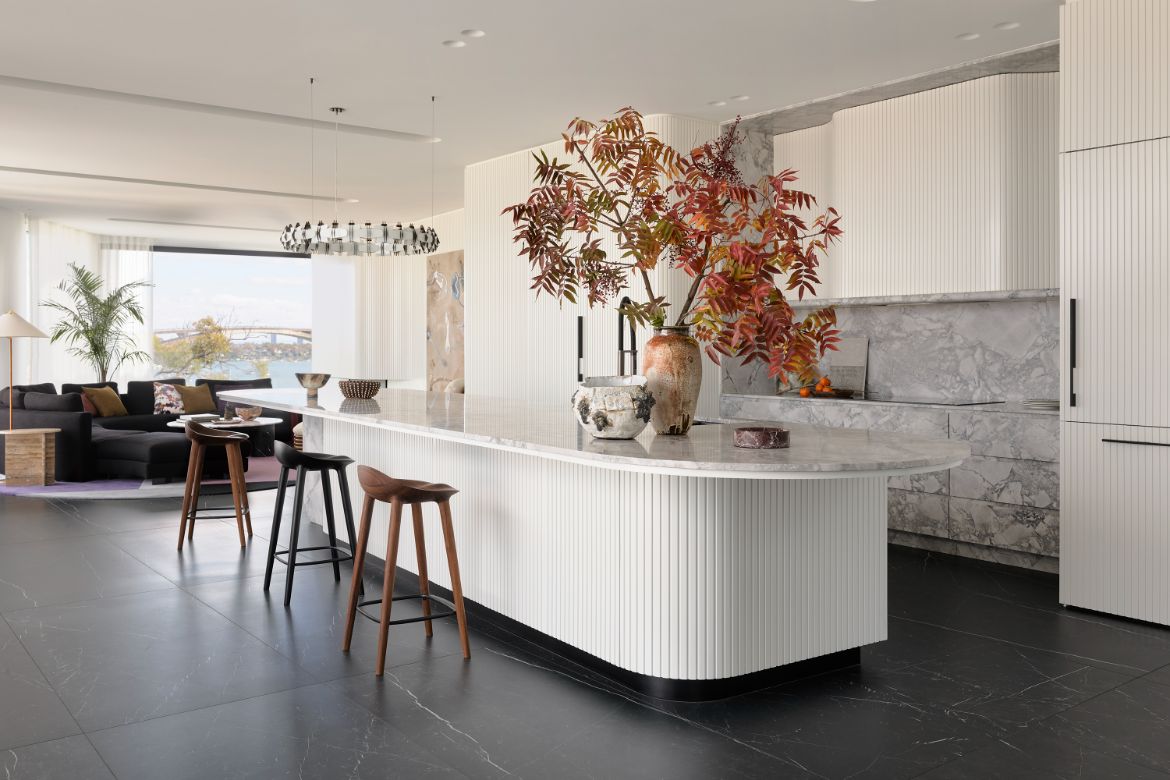As empty nesters, Greg Natale’s clients were adamant that they could have the perfect location and the living arrangement of their own choosing. As such, they secured a large house in Hunters Hill on Sydney’s lower north shore with sufficient interior space to create the particular spatial plan they desired plus incredible views.
“They wanted this big-room apartment penthouse floor. They just didn’t want neighbours, and I get it,” says Natale.
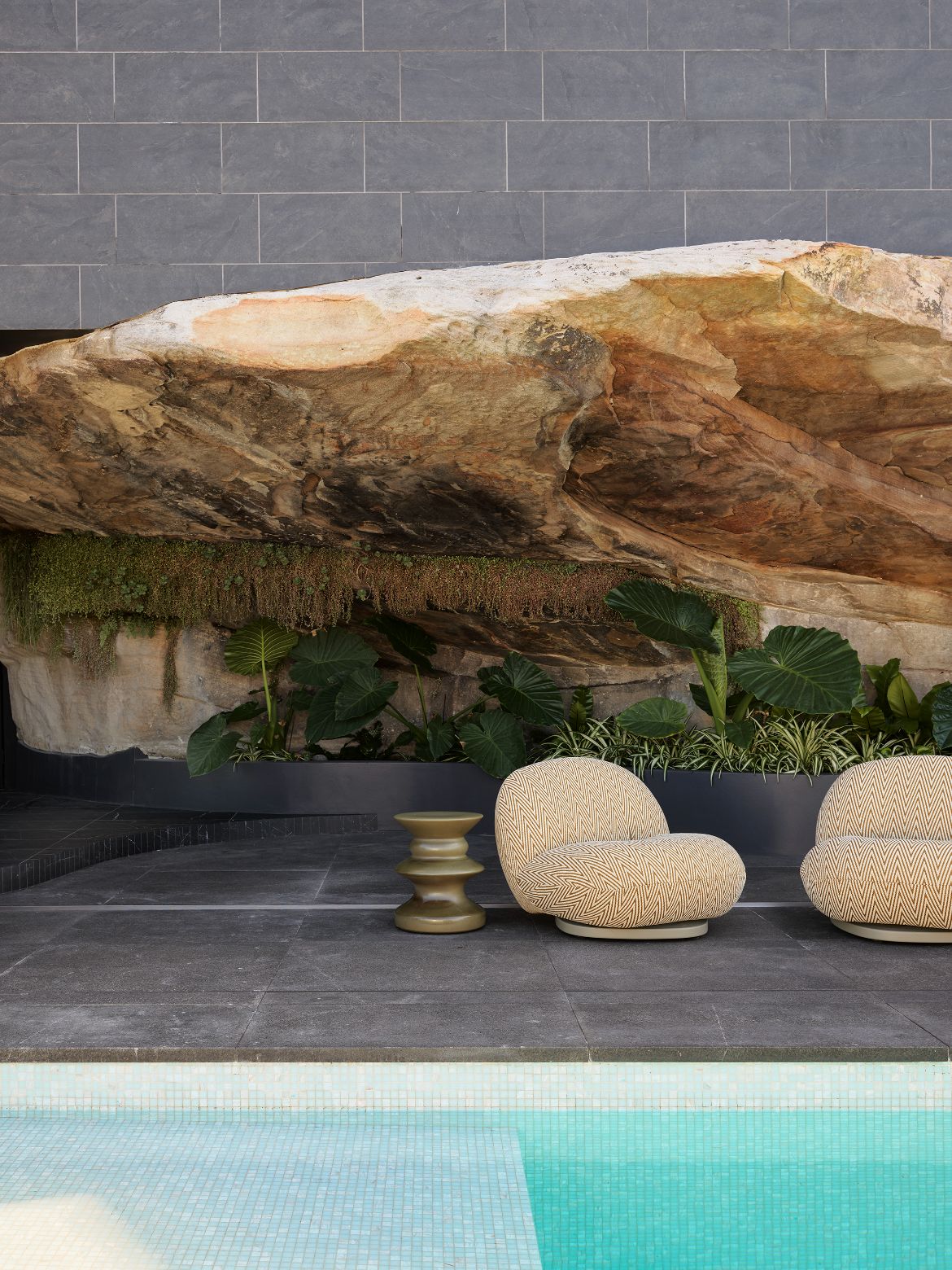
Things, however, are never that straight forward and, while the building design was exceptional, the construction was lacking. Natale explains further: “The house had amazing bones and the original architect had designed this incredible home. But the execution was terrible, terrible, terrible. They changed things, but the bones were there so I knew that we could work with it.”
Structural work was the primary need, with Natale adding a centrally positioned circular staircase with a skylight above, replacing the strange stair configuration that was disjoined across two separate areas. “The house didn’t have that incredible vertical statement, which a house like this needs. The staircase is where you can create something really sexy and you can create that really amazing vertical statement that ties the house together as its spine.”
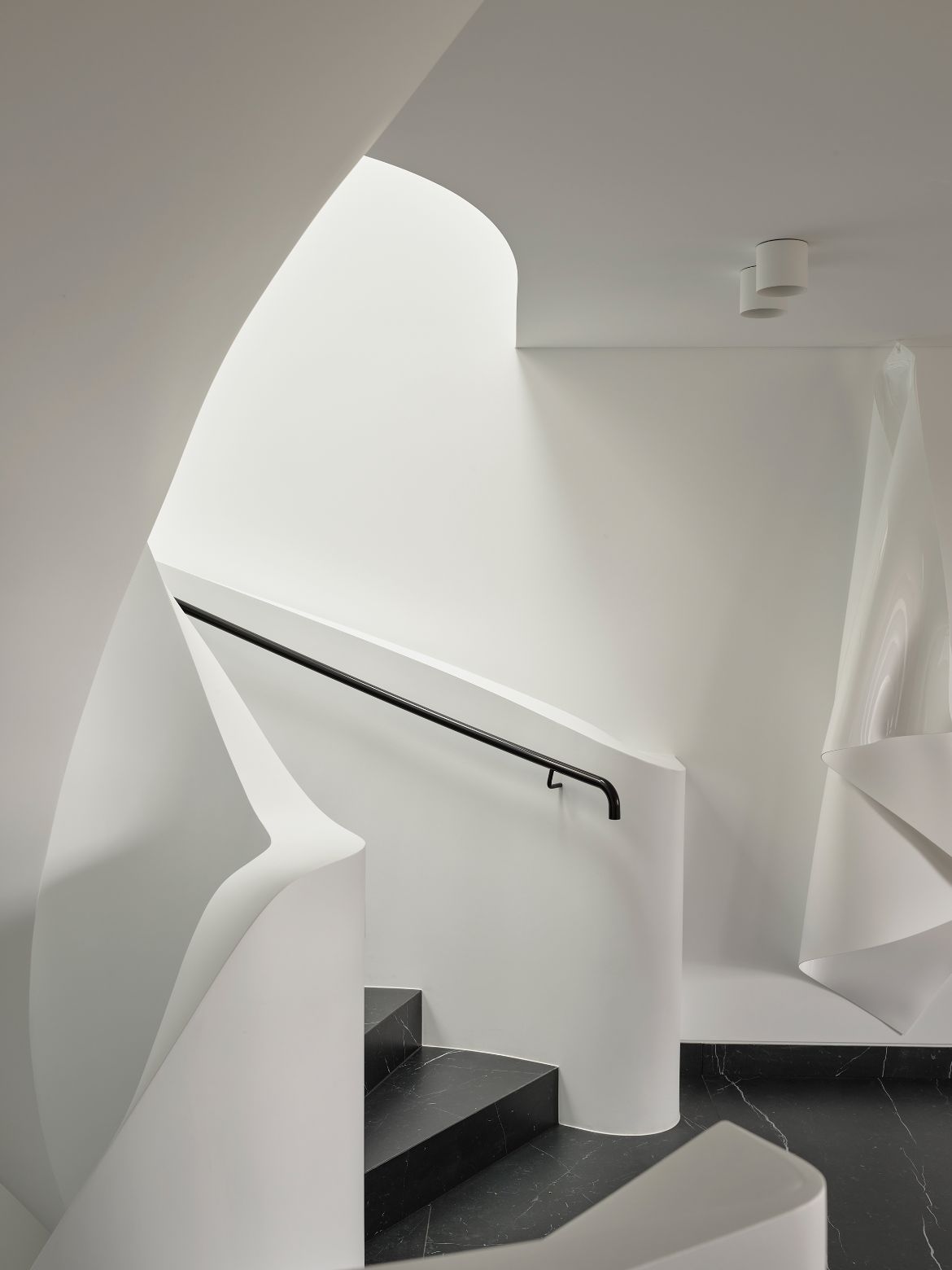
Ever the optimist, Natale notes that the lift was in the right place. The laundry by the front door, however, while a definite no, meant there was additional space to use and its removal reshaped the entry as a fabulous and wide corridor.
Appreciating the architectural bones, but not the profusion of balconies, balustrades, pinned glass and so forth, Natale stripped the exterior to give a unified whole. The original cladding was retained with new cladding being added where balconies were filled in for a ‘stealth’ façade. Moreover, a large balcony was inserted as a staggered recess above the main, which then steps back again to a viewing platform. The combination of a new large front door and vertical window balances the scale while visually connecting the floors as a single house.
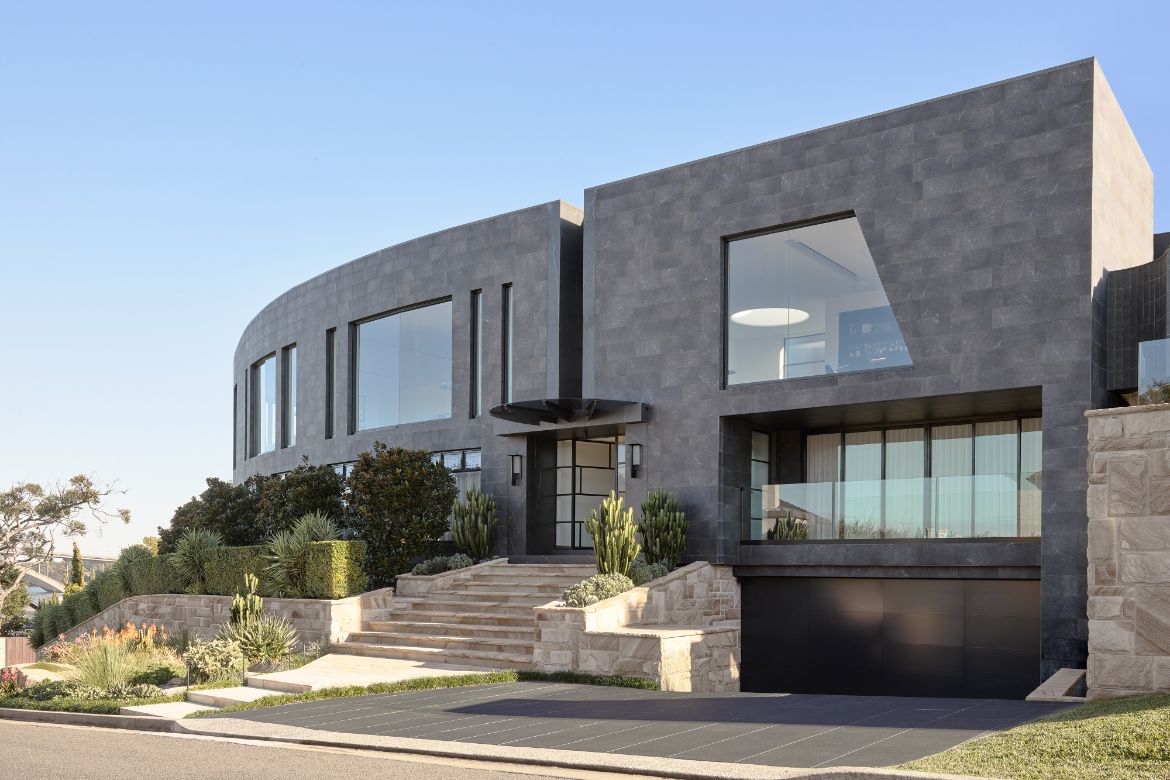
Similarly, the interior was clunky with its bifold doors closing spaces off and other areas that didn’t make sense to the whole. Natale’s iteration sees it pared back to large open volumes that are reinforced through a palette that is spare and minimal with an abundance of light a defining element.
“The palette that they wanted was really minimal,” Natale explains. “A lot of my clients want something that’s really light and minimal at the moment.” That said, there is a robust character to everything selected, from the organically patterned purple rugs to the combination of custom and contemporary furniture. The custom marble dining table designed by Natale, for example, is paired with chairs from Knoll.
“All the furniture is really quite modern. They’re very young at heart. They like very modern things and really pushed it to be very clean, very modern,” he adds.
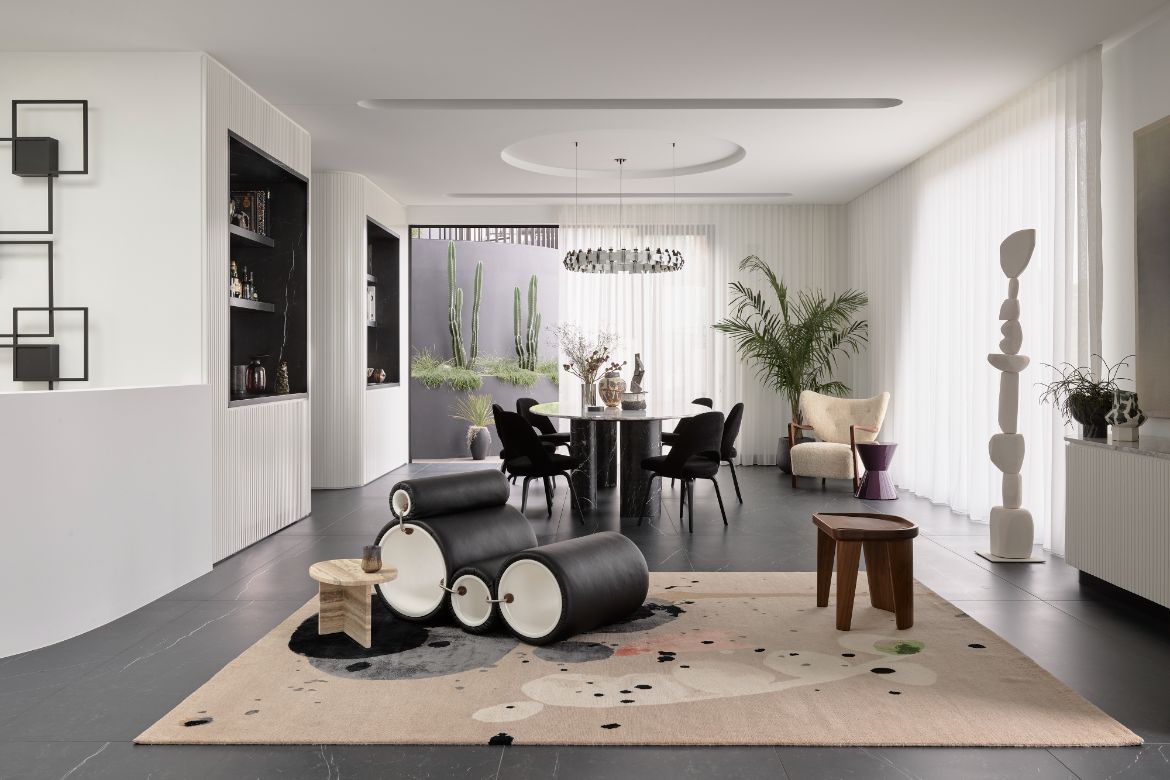
Natale is a thoughtful designer, with details of furnishings keyed to client needs. The small table by the bath, for example, presents a place to put your phone or glass of wine or book; it’s something he increasingly includes in his projects. The bathrooms themselves continue the penthouse style of being pared-back and spacious with luxurious materiality defining their character. “There’s enough texture – just a little bit of fluting to break things up so it doesn’t look plain,” says Natale of the palette which is predominantly black, white and grey marbles.
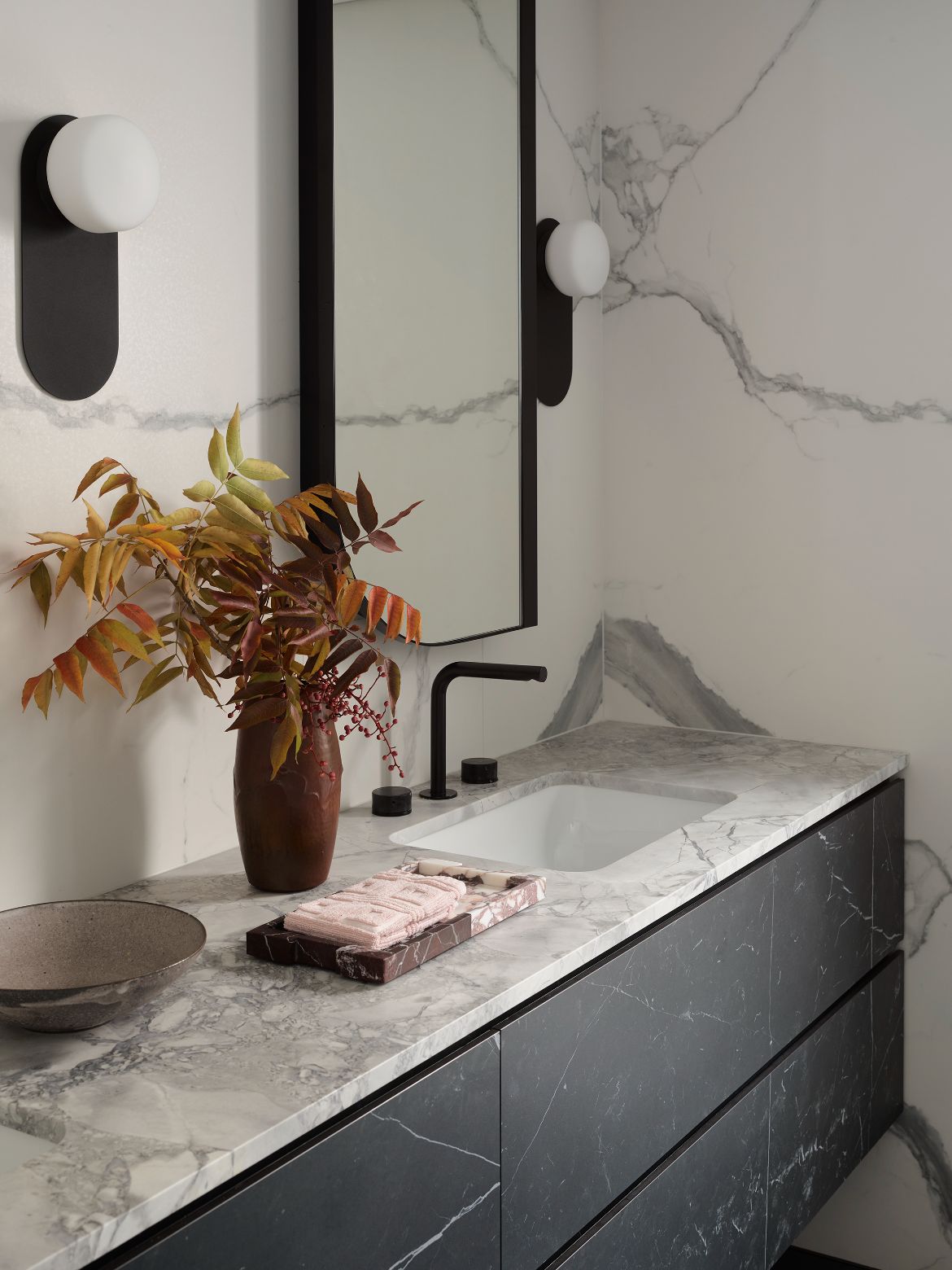
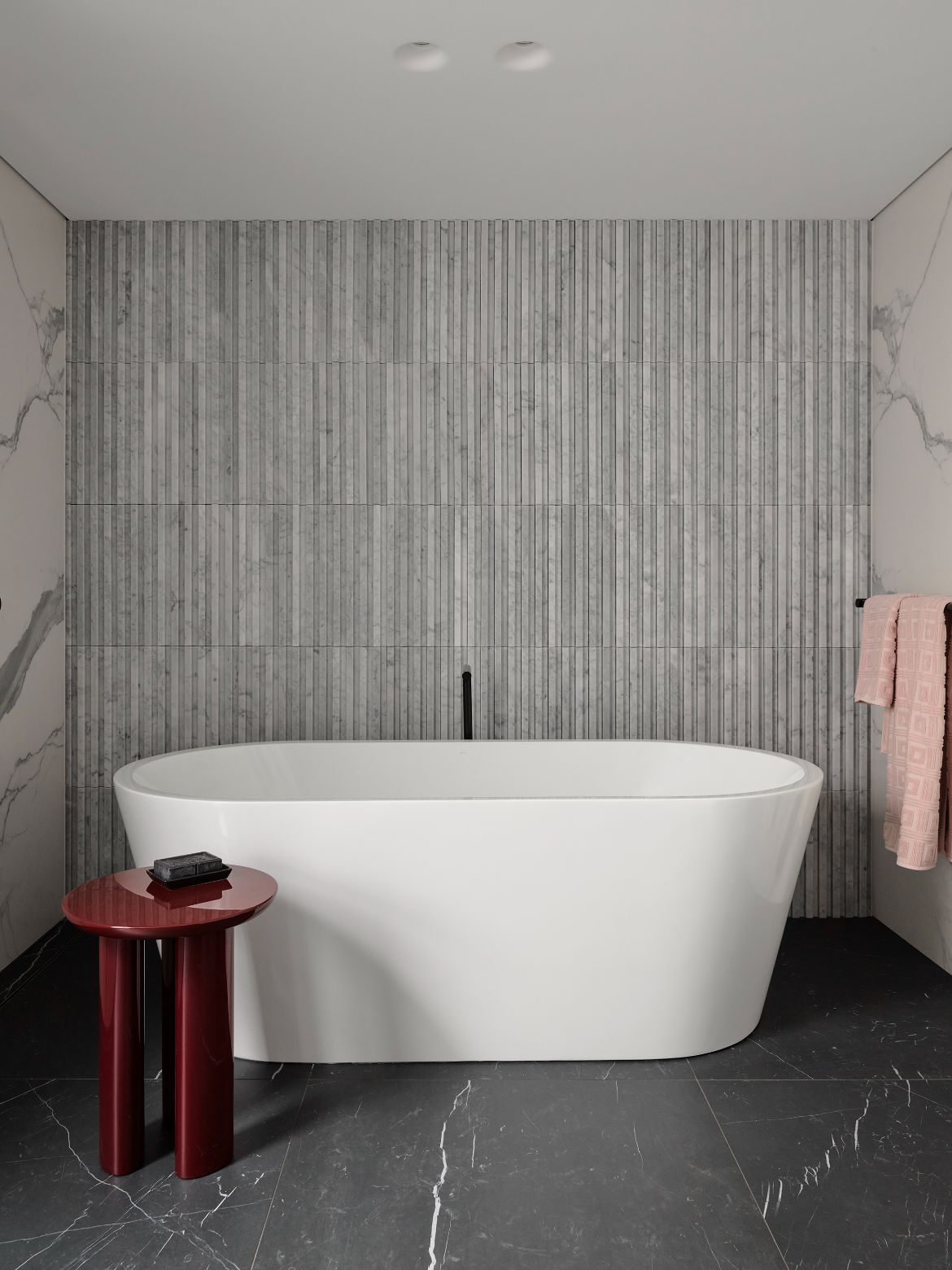
This fluting is continued as a feature in the kitchen where the expansive island anchors and defines spatial flow. “The original kitchen was actually in that position and it worked, but there was a really big void in the middle of that room and that didn’t work,” says Natale of the decision to create the island.
Gorgeously detailed, with a lightly floating table to one end, the island – which combines white cabinetry with grey marble – sits above a plinth of black marble to further the impression of floating lightness. The remainder of the kitchen in the same pairing of materials is elegantly sculptural with nothing excessive or decoratively out of place.

There is a fine line between the largesse of scale and the idea of a penthouse, but this is perhaps a comparative conundrum that doesn’t apply. Consider the very large penthouses of Asia or New York and suddenly the scale makes sense as a multi-floor living experience. Natale is a whiz with this type of typology-challenging acumen, with a seemingly inexhaustible range of inspiration always at the ready.
Greg Natale
gregnatale.com
Photography
Anson Smart
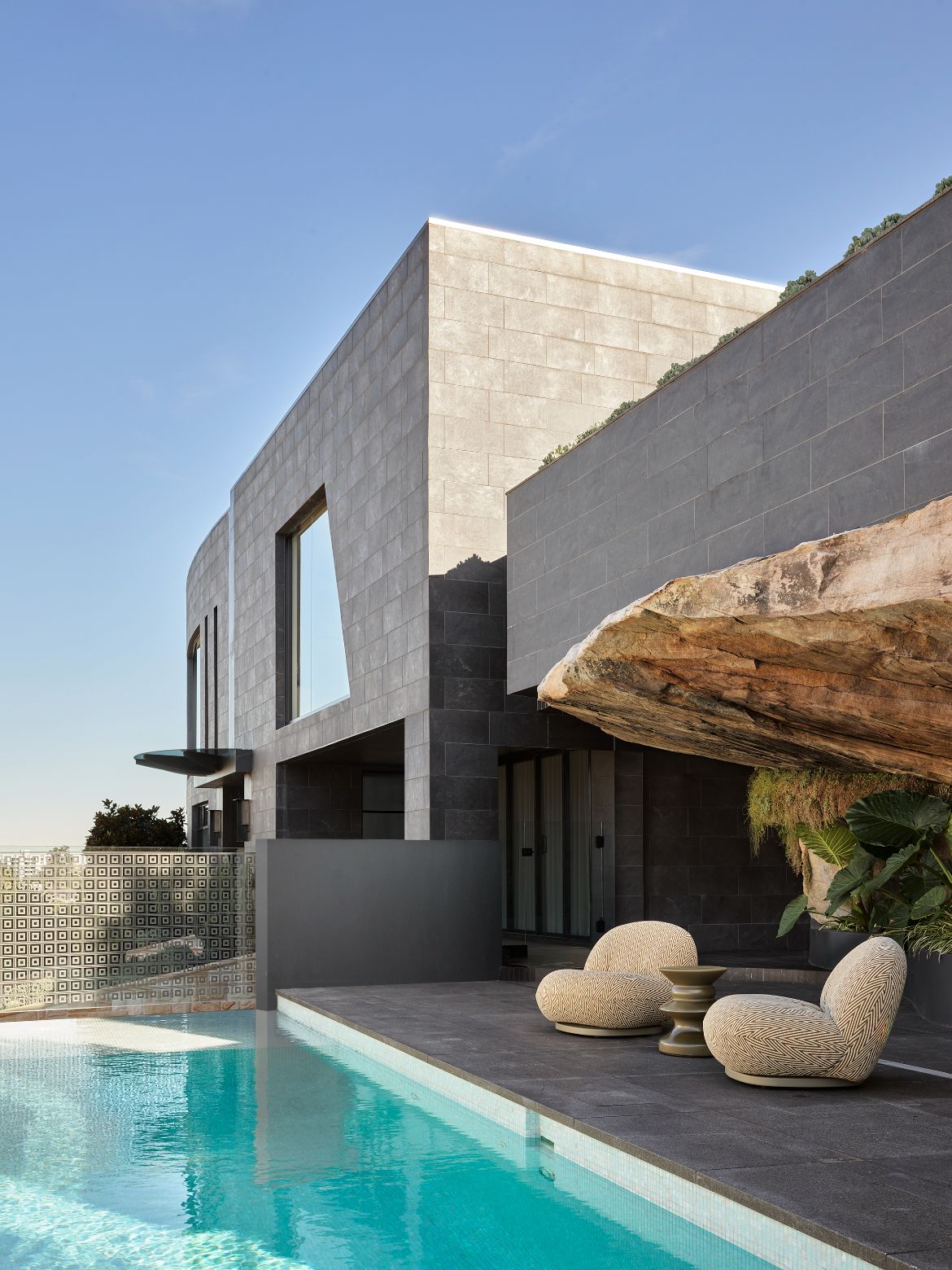
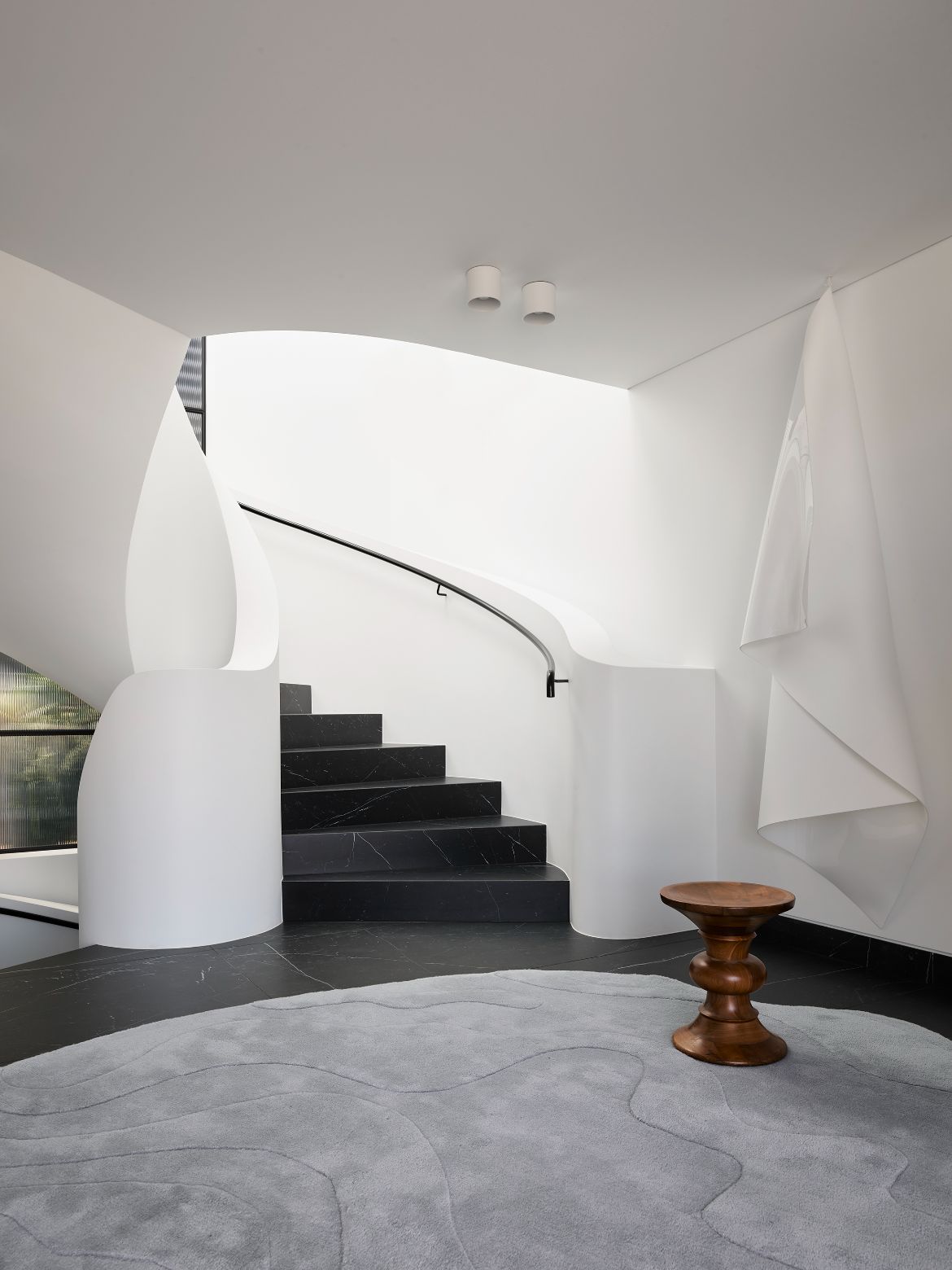
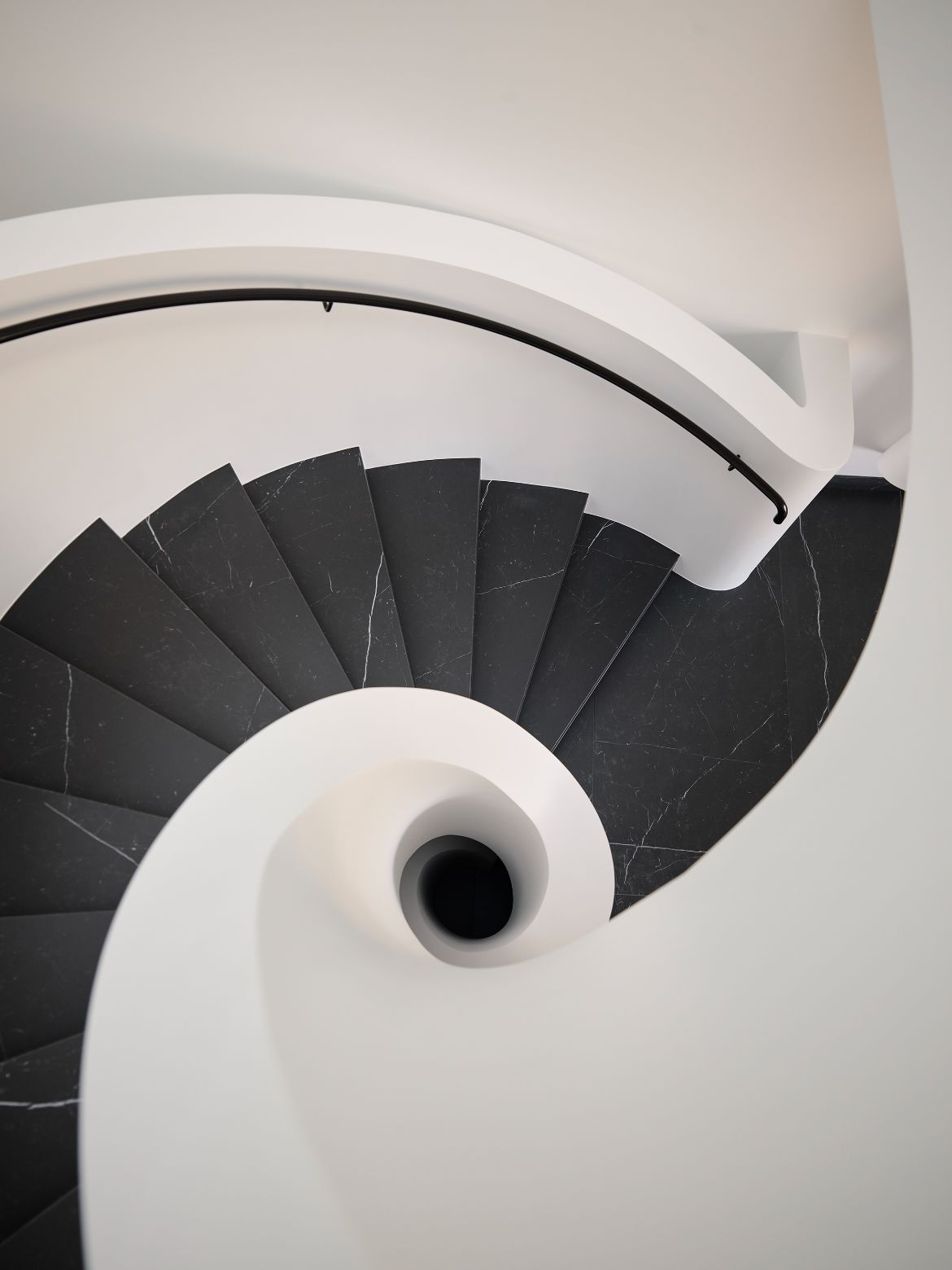



Colour and Brazilian brutalism in another Greg Natale project

